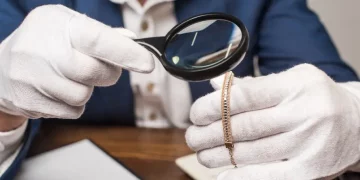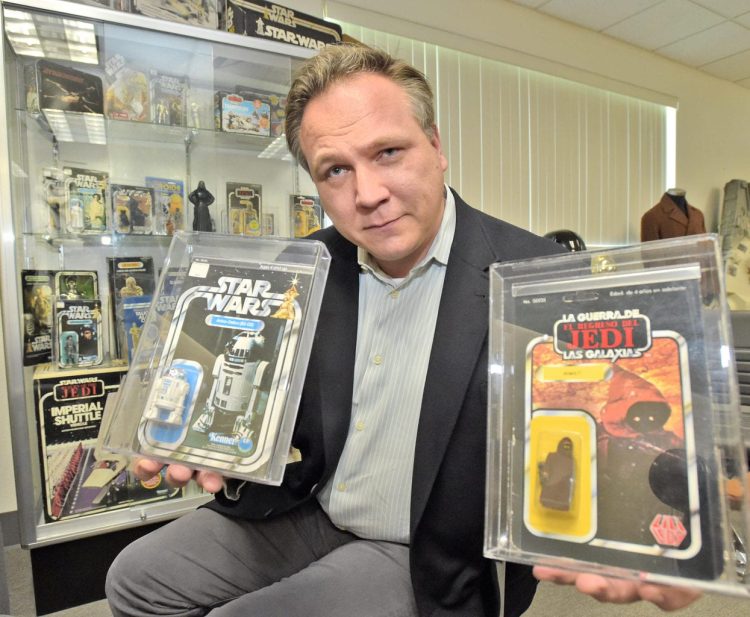The world of rare collectibles has long been a niche market for enthusiasts, investors, and collectors, where the quest for unique and valuable items has sparked interest in auction houses around the globe. In recent years, auctions have played a significant role in shaping the future of this industry, helping rare collectibles evolve into a new realm of high demand, technological advancement, and financial growth. This article will explore the evolving role of auctions in the collectibles industry, trends in the auction market, the impact of emerging technologies, and provide practical tips and resources for navigating future auctions.
The Evolving Role of Auctions in the Collectibles Industry
Historically, rare collectibles were often traded privately or within small, dedicated circles of collectors. Auctions have long been a way to bring these treasures to the public eye, creating a marketplace where items like rare artwork, vintage cars, limited-edition memorabilia, and precious antiques could be exchanged. However, in the last few decades, the role of auctions has expanded significantly.
The transformation began with the internet’s integration into the auction space. Digital platforms allowed people from around the world to participate in auctions, breaking down geographical barriers and increasing competition. As a result, prices for rare collectibles began to rise, with international bidders driving up the value of certain items. Furthermore, auction houses started to refine their processes, employing specialized appraisers and curators to ensure they were offering items of the highest quality, and creating specialized events for niche categories such as sports memorabilia or comic books.
Today, auctions are a primary destination for rare collectibles, where both seasoned investors and passionate collectors can gather. Auction houses have also responded to the evolving tastes of buyers by offering online bidding, allowing participants to place bids without having to attend in person. This has not only made auctions more accessible but has also significantly increased the overall volume of transactions, helping to shape the trajectory of the collectibles market.
Auction Market Trends: What’s Driving Prices Up or Down?
Auction markets for rare collectibles are highly dynamic, and many factors contribute to the rise and fall of prices. Understanding the drivers of these price shifts is essential for anyone participating in auctions, whether they’re sellers or buyers.
One of the most significant factors affecting prices in the auction market is demand. High demand for certain categories of collectibles, such as vintage sports memorabilia or limited-edition watches, can lead to dramatic price increases. The rarity and condition of an item also play a huge role in its value. Items that are in pristine condition or are the only known example of a particular collectible often fetch the highest prices.
Another key driver is the historical significance of an item. For example, pieces associated with major historical events or figures are often highly sought after. Auctions that feature objects with historical significance or cultural relevance can draw large crowds, both in-person and online, which in turn drives prices up.
Conversely, the popularity of certain collectible categories can experience fluctuations. For instance, the market for comic books or trading cards can be highly volatile, with prices spiking when new films or television shows based on those properties are released and dipping when interest wanes. Trends in pop culture can significantly influence the value of certain collectibles, making it important for collectors to keep a finger on the pulse of current events.
Economic factors also play a role in the auction market. Economic recessions, inflation, and interest rates can affect buyer behavior, as people may be more cautious about spending large sums of money during times of financial uncertainty. Additionally, the strength of different currencies can influence international bidding patterns, as foreign buyers may be more or less willing to participate based on exchange rates.
Auction houses themselves also have a hand in shaping market trends. Many auction houses release auction results and press releases, which can influence public perception and, in turn, affect demand and prices. Auctions that feature high-profile items or are promoted heavily in the media can create a sense of urgency and competition, which often results in higher bids.

Emerging Technologies Shaping Auction Practices
The integration of emerging technologies is having a profound impact on the way auctions are conducted, both in terms of efficiency and accessibility. The rise of digital tools has made it easier for buyers and sellers to participate in auctions regardless of location, and new technologies are continuously being implemented to improve the experience for all parties involved.
One of the most notable advancements is the growth of online auctions. While online bidding platforms were once a novelty, they have now become the backbone of the auction industry. Major auction houses like Christie’s and Sotheby’s have embraced online bidding, enabling collectors from around the world to bid on rare collectibles without needing to attend in person. The convenience of bidding from home or on the go has attracted a new generation of tech-savvy collectors and investors, which has led to increased demand and higher overall sales.
Blockchain technology is another innovation that’s beginning to shape the auction industry. Blockchain’s ability to verify ownership and provenance in a decentralized and immutable manner is particularly valuable in the collectibles market, where authenticity is crucial. This technology can help to prevent fraud and increase buyer confidence by ensuring that the item being auctioned is genuine and has a clear ownership history. Additionally, blockchain can facilitate the sale of digital collectibles, such as non-fungible tokens (NFTs), allowing digital art and virtual items to be auctioned just like traditional collectibles.
Augmented Reality (AR) and Virtual Reality (VR) technologies are also starting to make their mark on the auction space. Some auction houses are experimenting with VR to create immersive environments where potential buyers can view items in a 3D space before placing their bids. This technology allows buyers to interact with rare items as if they were physically present at the auction, providing a new level of engagement and increasing the likelihood of higher bids.
Artificial Intelligence (AI) is being used in various ways to optimize the auction process. AI-powered algorithms can help to estimate the value of a collectible, predict bidding patterns, and even personalize auction recommendations for individual users based on their past behavior. This data-driven approach is enhancing the overall efficiency and transparency of the auction process, making it easier for both buyers and sellers to navigate.
Practical Tips and Resources for Navigating Future Auctions
Navigating the auction market can be a daunting task for newcomers, especially when rare collectibles are involved. However, with the right knowledge and resources, anyone can become a successful auction participant. Here are some practical tips to help you make the most of future auctions:
- Do Your Research – Before participating in an auction, it’s essential to research the items you’re interested in. Look into the item’s provenance, condition, and market value. Familiarizing yourself with recent auction results for similar items can help you set a reasonable budget and avoid overpaying.
- Understand the Auction Process – Auctions can be fast-paced, and it’s important to understand how bidding works. Take the time to read the auction house’s terms and conditions, understand how the bidding increments work, and familiarize yourself with any buyer’s premiums or additional fees that may apply.
- Set a Budget – It’s easy to get caught up in the excitement of an auction, but it’s important to set a budget beforehand. Decide how much you’re willing to spend on an item and stick to it. Auctions can be competitive, but staying within your budget will help you avoid making impulsive decisions.
- Take Advantage of Technology – Make use of online bidding platforms, mobile apps, and auction websites to monitor upcoming auctions and place bids remotely. Many auction houses offer live-streamed auctions, where you can watch the event unfold and place bids in real time.
- Consult Experts – If you’re not an expert in a specific category, consider seeking advice from specialists or appraisers. Many auction houses provide expert consultations to help you understand the value of an item before placing a bid.
- Stay Informed – Follow auction houses, news outlets, and social media accounts that specialize in collectibles. Keeping up to date with market trends, upcoming auctions, and changes in auction policies will help you stay ahead of the curve.
Conclusion
Auctions have been instrumental in shaping the future of rare collectibles, transforming what was once a niche market into a dynamic and accessible industry. With the rise of online platforms, blockchain technology, and artificial intelligence, auctions are becoming more inclusive and efficient, creating new opportunities for buyers and sellers alike. By staying informed, understanding market trends, and utilizing emerging technologies, collectors and investors can navigate the evolving auction landscape and secure valuable treasures for years to come.

















































